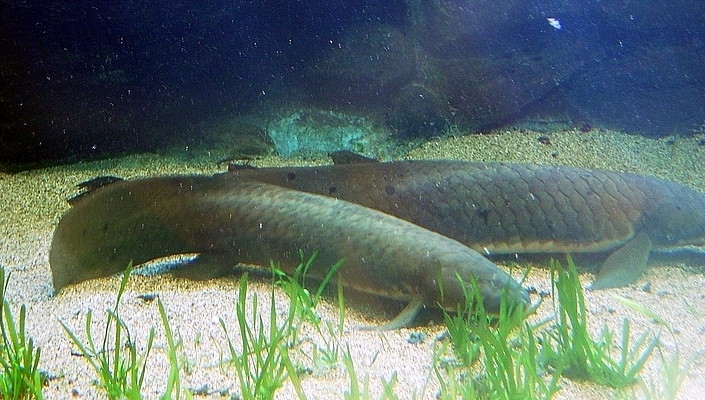 So since my last blog, my male Wolf Cichlid has done it again. Another disasterous fit of rage or passion, but this time though he decided to kill his mate. The female that produced more than a couple thousand babies in the short three years that she was mine is dead. I wish I knew what was going through his fishy mind, because he was as brutal as OJ during his jealous tirade (ooops, just kidding, we all know OJ is innocent). Like OJ, my mean male has managed to avoid capital punishment, banished to a holding tank at TFP before he can be re-homed to some other lucky (or unlucky) cichlid enthusiast.
So since my last blog, my male Wolf Cichlid has done it again. Another disasterous fit of rage or passion, but this time though he decided to kill his mate. The female that produced more than a couple thousand babies in the short three years that she was mine is dead. I wish I knew what was going through his fishy mind, because he was as brutal as OJ during his jealous tirade (ooops, just kidding, we all know OJ is innocent). Like OJ, my mean male has managed to avoid capital punishment, banished to a holding tank at TFP before he can be re-homed to some other lucky (or unlucky) cichlid enthusiast.
So, now I have to figure what I should try to breed next! Several things came to mind immediately; Grammodes I’ve already bred, Argentia I’ve kept but never bred, and then there were the the Cuban Cichlids (Nandopsis tetracanthus). These medium-sized, powerhouse fish attain lenghts of up to 14 inches. They are very striking fish, both male and female are monochromatic, that is, they both sport a black and white pattern.
I was able to trade my rotten male dovii on 4 1.5 inch fish. They all went into the 40 breeder and have so far adapted really well, they were already eating an hour after being put into their new home. The following day I did a head count and was glad to see all four fish still kicking, as everything I’ve read says they are highly aggressive towards each other. Let me tell you it is so true!
They have set up the pecking order already, though they haven’t inflicted too much damage on each other yet. To break up the tension in the tank, I also introduced a Chromidotilapia sp. individual from West Africa. The little Cubans quickly went over to check out the new fish, but the dominant male was smart not to attack, since it was 2.5 times
his size. By the looks of things (if I go by size) I may have two pairs!
They feed very well. The dominant male will pig out so much his belly distends, almost to the point that I have to be careful to limit his intake…he sometimes looks as if he’s about to explode. My bet is that he will grow very quickly. These guys take everything from flakes to sinking pellets, as they get larger I will also feed them nightcrawlers and red worms. I wish that Dovii hadn’t killed his mate…he is a beautiful boy, but I couldn’t stand to look at hm after that carnage. It happens when you keep these crazy fish. So I’m hoping to have my first batch of Cuban Cichlid eggs in about 6 months from now…until then wish me luck!
Look forward to updating you on the situation!
Jose
 Hello, Frank Indiviglio here. Capable of surviving up to 4 years without food and water and unchanged since the time of the dinosaurs – Lungfish facts read like fiction. Please see Part 1 of this article for information on the natural history of African, Australian and South American Lungfishes. Today we’ll review their care in the aquarium.
Hello, Frank Indiviglio here. Capable of surviving up to 4 years without food and water and unchanged since the time of the dinosaurs – Lungfish facts read like fiction. Please see Part 1 of this article for information on the natural history of African, Australian and South American Lungfishes. Today we’ll review their care in the aquarium. That Fish Blog – Aquarium Advice and Information
That Fish Blog – Aquarium Advice and Information



